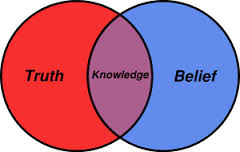On the surface, everyone’s favorite buzzword certainly seems unobjectionable enough. In addition to being short, snappy, and alliterative (all good qualities in a buzzword), who could possibly argue that high school students shouldn’t be prepared for college and careers? When you consider the slogan a bit more closely, however, it starts to make a little less sense.
First and most obviously, the American higher education system is staggeringly diverse, encompassing everything from for-profit trade schools to community colleges to state flagship institutions to the Ivy League. While it seems reasonable to assume that there is a baseline skills that all (or most) students should be expected to graduate from high school, a one-size-fits-all approach makes absolutely no sense when it comes to college admissions.
Does anyone seriously think that a student who wants to study accounting at a local community college and one who wants to study physics at MIT should come out of high school knowing the same things? Or that a student who wants to study communications through an online, for-profit college and a student who wants to study philosophy at Princeton should be expected to read at the same level? A student receiving straight A’s at one institution could easily need substantial remediation to even earn a passing grade at the other. Viewed this way, the definition of “college readiness” as “knowledge and skills in English and mathematics necessary to qualify for and succeed in entry-level, credit-bearing post-secondary coursework without the need for remediation” is effectively meaningless.
Second, let’s consider the “career readiness” part. Perhaps this was less true when the slogan was originally coined (by the ACT…I think), but today it is more or less impossible to obtain even the lowest-level white collar position without a college diploma. Virtually anyone entering the job market immediately after high school will almost certainly be considered only for service jobs (flipping burgers, stocking shelves at Walmart) or manual labor. While these jobs do require basic literacy and numeracy skills, they are light years away from those required by even a relatively un-challenging college program. It makes no sense to group them with post-secondary education.
Third, the pairing of “college and career” is more than a little problematic. While there are obviously some skills that translate well in both the classroom and in the boardroom (writing clearly and grammatically, organizing one’s thoughts in a logical manner, considering multiple viewpoints), there are other ways in which the skills valued in the classroom (searching for complexity, “problematizing” seemingly straightforward ideas) are exactly the opposite of those usually prized in the working world. They are enormously valuable skills, but on their own merits. It really only makes sense to lump college and work together in this way if you are attempting to redefine college as quasi-trade school for the tech industry.
Like most people, though, I assumed that the “college” part was intended refer to traditional, four-year institutions. Then, while reading one of the white papers released by Ze’ev Wurman and Sandra Stotsky (one of the writers of the 1998 Massachusetts ELA standards, considered the most rigorous in the country, and one of only two members of the Common Core validation committee to refuse to sign off on the standards), I came across this edifying tidbit:
The clearest statement of the meaning of [college and career readiness] that we have found appears in the minutes of the March 23 meeting of the Massachusetts Board of Elementary and Secondary Education. Jason Zimba, a member of the mathematics draft-writing team who had been invited to speak to the Board, stated, in response to a query, that “the concept of college readiness is minimal and focuses on non- selective colleges.” Earlier, Cynthia Schmeiser, president and CEO of ACT’s Education Division, one of Common Core’s key partners, testified to a U.S. Senate Committee that college readiness was aimed at such post-secondary institutions as “two- or four-year colleges, trade schools, or technical schools.” These candid comments raise professional and ethical issues. The concept is apparently little more than a euphemism for “minimum competencies,” the concept that guided standards and tests in the 1980s, with little success in increasing the academic achievement of low-performing students…
Moreover, it seems that this meaning for college readiness was intended only for low-achieving high school students who are to be encouraged to seek enrollment in non-selective post-secondary institutions. Despite its low academic goals and limited target, this meaning for college readiness was generalized as the academic goal for all students and offered to the public without explanation. (Stotsky and Wurman, “The Emperor’s New Clothes: National Assessments Based on Weak “College and Career Readiness Standards,” 2010.)
Stotsky goes on to point out that not a single detail from the very explicit standards laid out in the 2003 report “Understanding University Success” — a report that included input from 400 faculty members from 20 institutions, including Harvard, MIT, and the University of Virginia — was included in the Common Core Standards.
In contrast, Common Core standards were primarily written by 24 people, many of whom were affiliated with the testing industry, and some of whom had no teaching experience whatsoever. As Mercedes Schneider points out, Jason Zimba, the lead writer of the math standards:
…acknowledge[d] that ending with the Common Core in high school could preclude students from attending elite colleges. In many cases, the Core is not aligned with the expectations at the collegiate level. “If you want to take calculus your freshman year in college, you will need to take more mathematics than is in the Common Core.”
Likewise, I would add that analytical skills a tad more sophisticated than simply comparing and contrasting, or using evidence to support one’s arguments, are a prerequisite for doing any sort of serious university-level work in the humanities or social sciences. As is vocabulary beyond the level of synthesize and hypothesis.
Food for thought, the next time you hear/see Common Core described as a set of “more rigorous” (hah!) standards designed to prepare students for colleges and the workforce.”
Cynthia Schmeiser, incidentally, now works for the College Board. It’s amazing how, when you do a little prodding (or, should I say, “delve deep,” to invoke another preferred euphemism), the same names keep cropping up over and over again…





